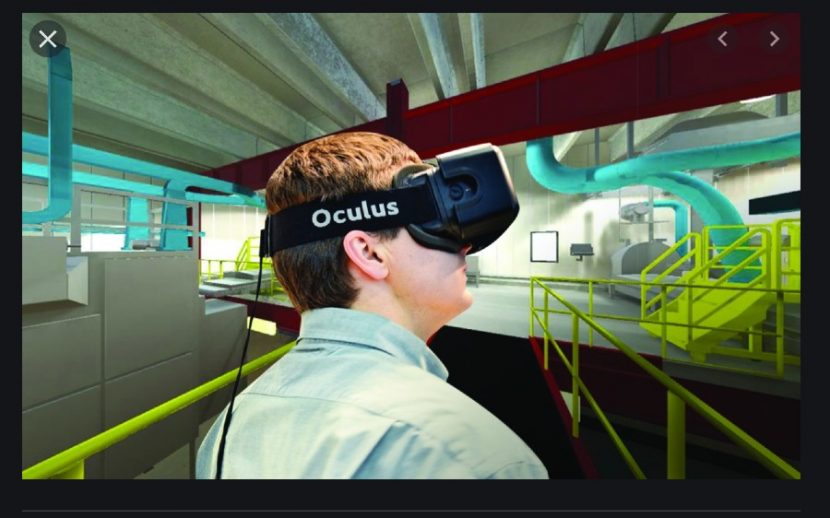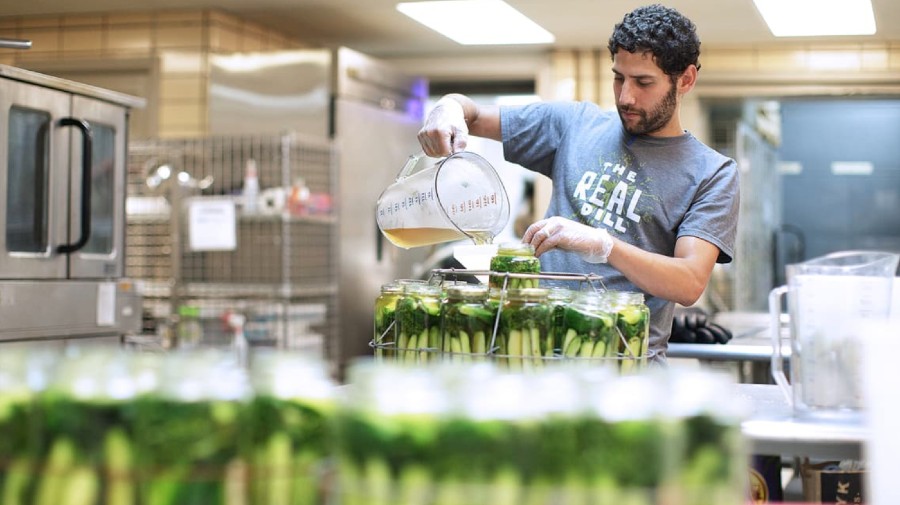Virtual Reality Set to Modernize Food Safety Training
By Suzanne Osborne
The Food Safety Modernization Act has raised the standard for global food safety. As a consequence, there is a pressing need for updated training along all stages of the supply chain. But training is an expensive, time-consuming endeavour.
Virtual Reality (VR) has become an attractive option to address the need for modernized training programs. VR allows the user to gain hands-on experience in an immersive scenario that mimics an on-the-job-setting. VR offers scaled learning; presenting increasingly complex scenarios as the trainee gains skills. The advantages of VR have been heralded in other industries for decades. Reviewers point to development costs as the main reason that its use has not become widespread. Yet, there are several factors one must consider when determining whether VR is an appropriate replacement or complement to traditional training methods.
Improved Learning Outcomes
VR-based training provides a clear short-term learning advantage. Trainees who participated in VR-based training had higher test scores and improved retention up to a year after completion compared to those in a traditional training program. Improved training outcomes are the result of VR’s ability to provide a more realistic, enjoyable, and engaging experience. However, there is yet no research to suggest a benefit on long-term job performance. As such, VR-based training programs are ideal for high-turnover jobs: they can get new employees up to speed faster.
The Bottom Line
The cost to develop a job-specific VR training program, though decreasing, remains prohibitive to many businesses. However, the long-term savings can outweigh the initial investment in some cases. VR allows for multiple employees to be trained simultaneously, across multiple locations and work shifts, and without the presence of a trainer. Smaller training space is required and no products are wasted during training. VR-based training programs are therefore easier to scale than traditional methods to accommodate a large of employees.
Jobs whose skills and regulations are constantly evolving may not be well suited to VR-based training owing to the costs associated with continuous software changes. Also, the hardware required may not be available in remote locations or developing countries.
Enabling Traceability and Accountability
VR training has the ability to track and record training results from each individual and provide tailored feedback. Managers can review results across individuals, topics, and locations. VR allows companies to see which aspects of training are more challenging and plan for future training needs.
The development of a training module will likely require a partnership with a VR contractor. Businesses need to consider any confidentiality or liability concerns before initiating the program.
VR Provides the Safest Learning Environment
The food and beverage sector includes many labour- and detail-oriented jobs which can pose safety risks to improperly trained employees. Unlike traditional training methods that often require on-the-job training, VR offers employees the chance to gain job skills in a safe environment. By mimicking real-world scenarios, trainees are free to make mistakes and learn from them without undue risk to themselves, employers, or consumers. As such, VR-training is an ideal solution for dangerous workplaces.
Uptake of VR-based training in the food industry has historically been slow but we are likely to see an upward trend in its application. Although it is unlikely to completely replace traditional training methods, VR can provide a fun and engaging solution to many training needs as we move towards modernizing food safety practices.
About the Author:
Dr. Suzanne Osborne’s expertise is in the field of host-pathogen interactions and foodborne bacteria. She obtained her doctoral degree at McMaster University and worked as a Research Fellow at the Hospital for Sick Children (Toronto). She has received numerous awards for her research. Suzanne currently does freelance science writing and grant writing.

-
 FeaturedRisk management
The Cost of a Breach: What a Cyberattack Could Mean for Food Safety Recalls
FeaturedRisk management
The Cost of a Breach: What a Cyberattack Could Mean for Food Safety Recalls
-
 FeaturedRisk management
Securing the Food Chain: How ISO/IEC 27001 Strengthens Cybersecurity
FeaturedRisk management
Securing the Food Chain: How ISO/IEC 27001 Strengthens Cybersecurity
-
 FeaturedRisk management
Revolutionizing Food Safety Training: Breaking Out of the “Check-the-Box” Mentality
FeaturedRisk management
Revolutionizing Food Safety Training: Breaking Out of the “Check-the-Box” Mentality
-
 GFSI Standards
GFSI 2025: Building Trust, Tech-Forward Solutions, and Global Unity in Food Safety
GFSI Standards
GFSI 2025: Building Trust, Tech-Forward Solutions, and Global Unity in Food Safety
-
 FeaturedFood Safety
Integrated Pest Management: Strategies to Protect Your Brand’s Reputation
FeaturedFood Safety
Integrated Pest Management: Strategies to Protect Your Brand’s Reputation
-
 FeaturedFood Safety Culture & Training
No Open Door Policy: Challenges That Impact Pest Control in Food Processing Plants
FeaturedFood Safety Culture & Training
No Open Door Policy: Challenges That Impact Pest Control in Food Processing Plants




